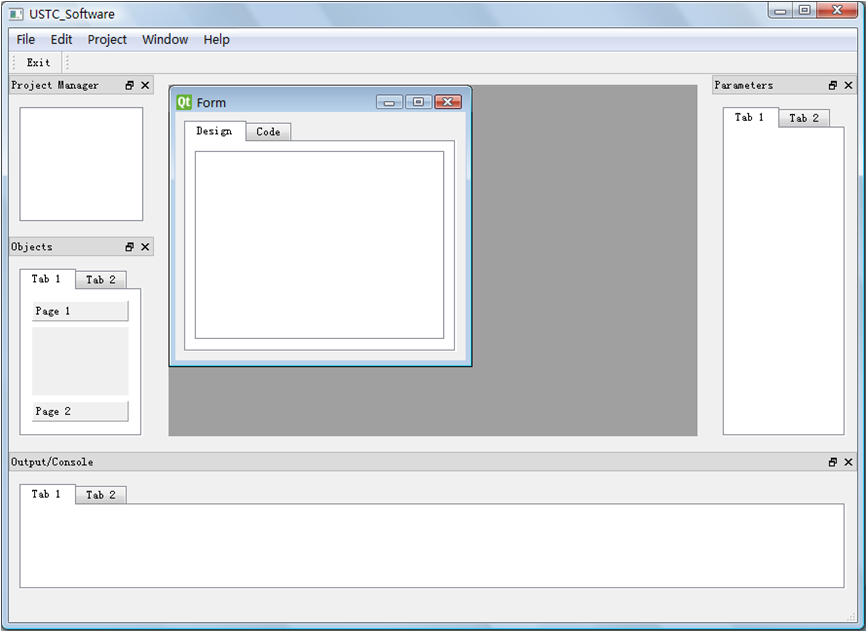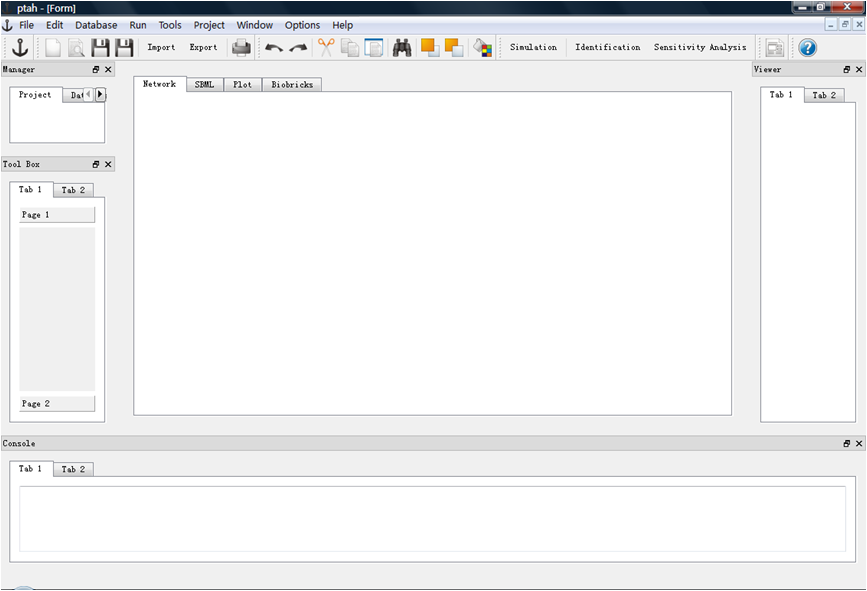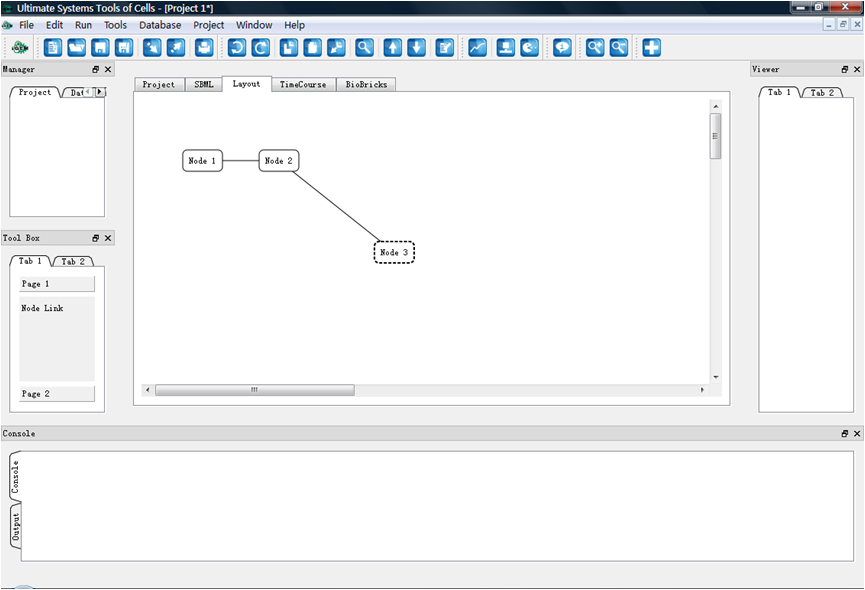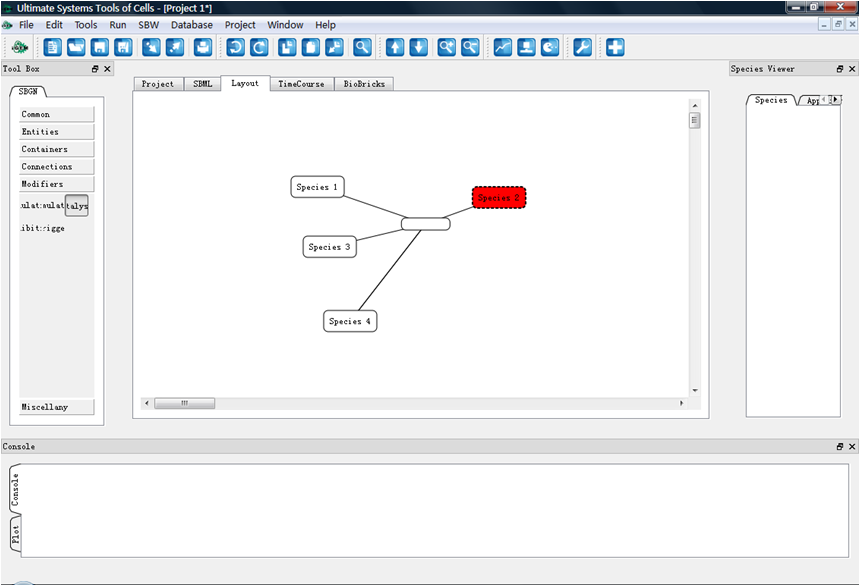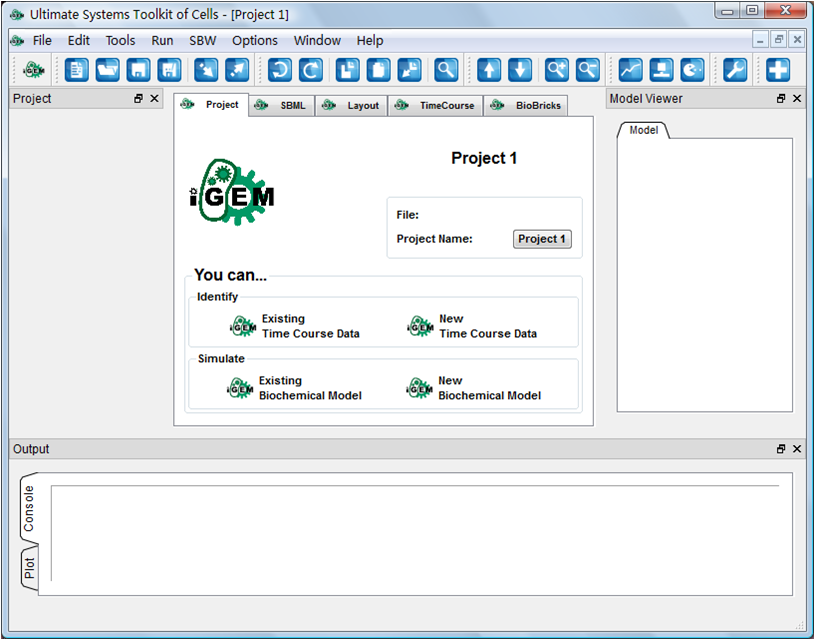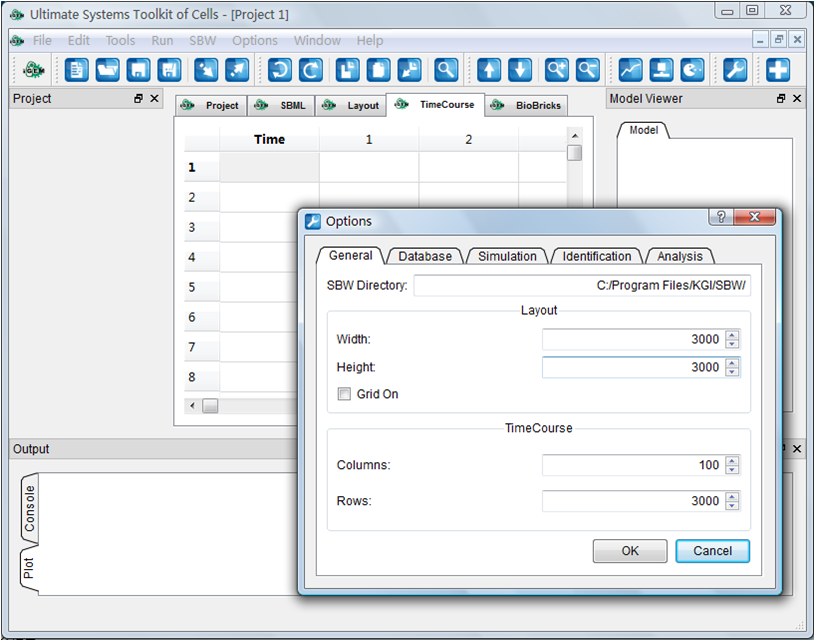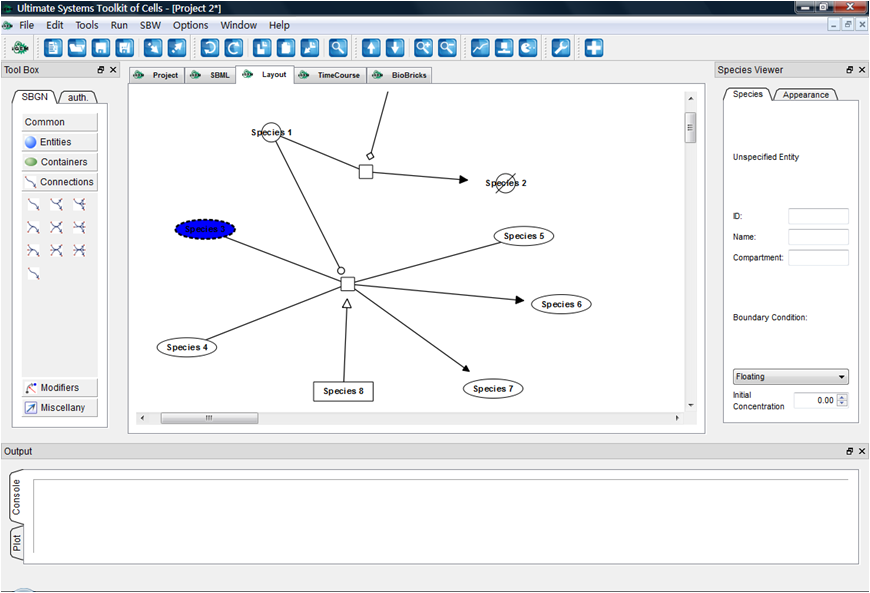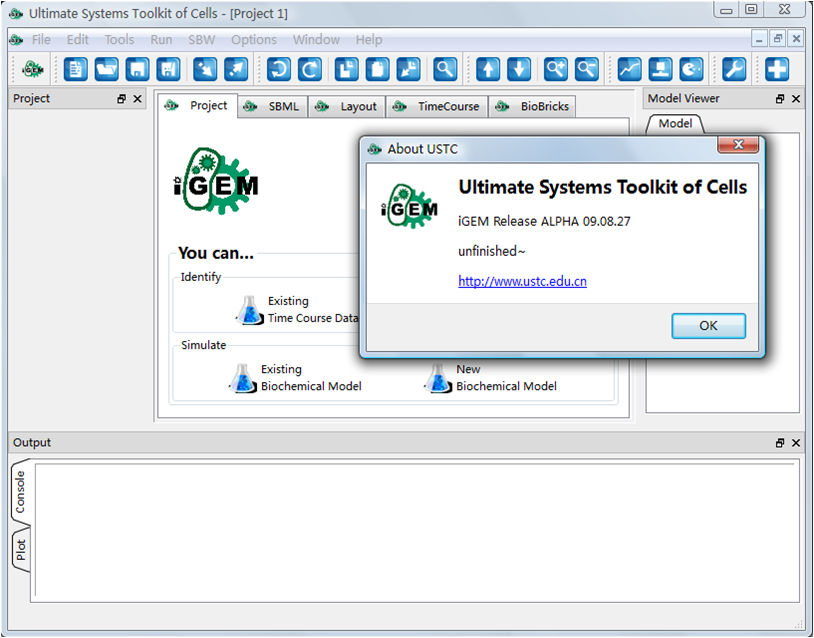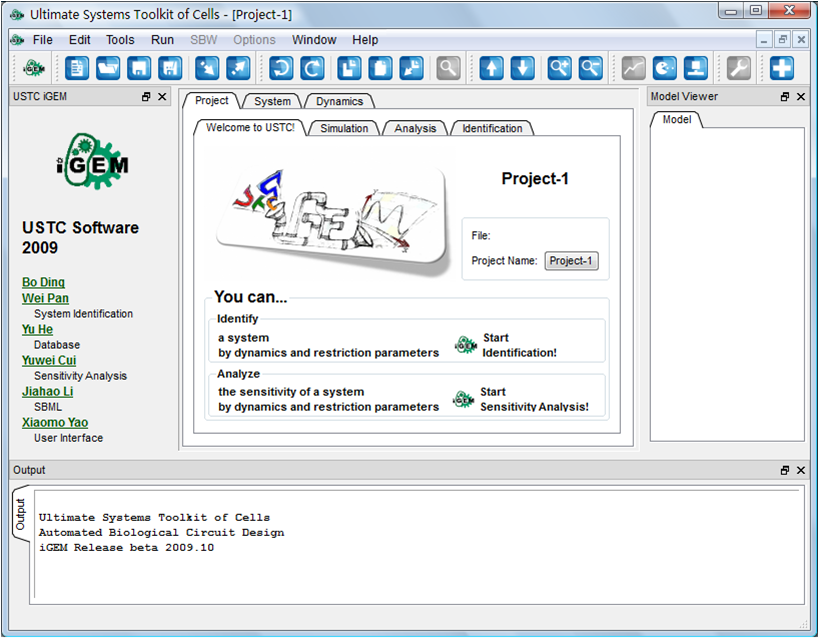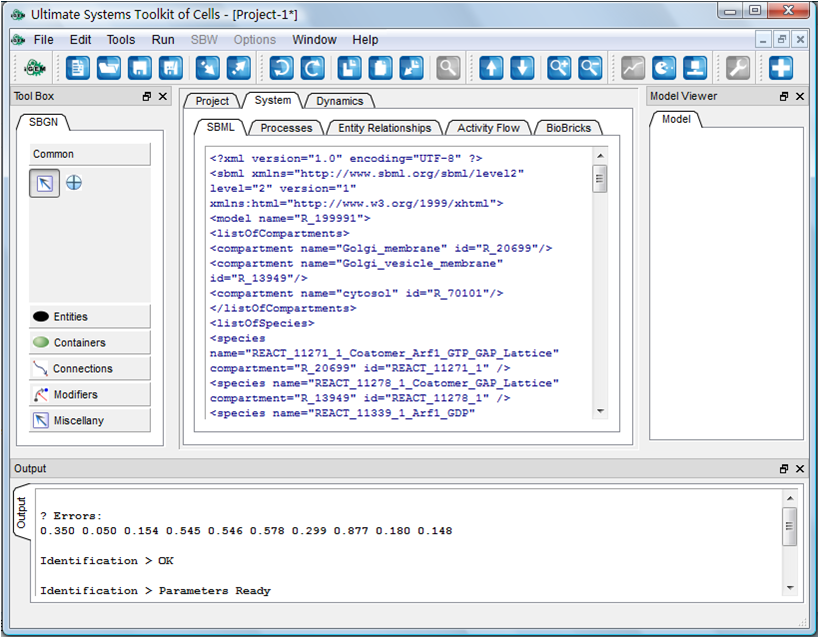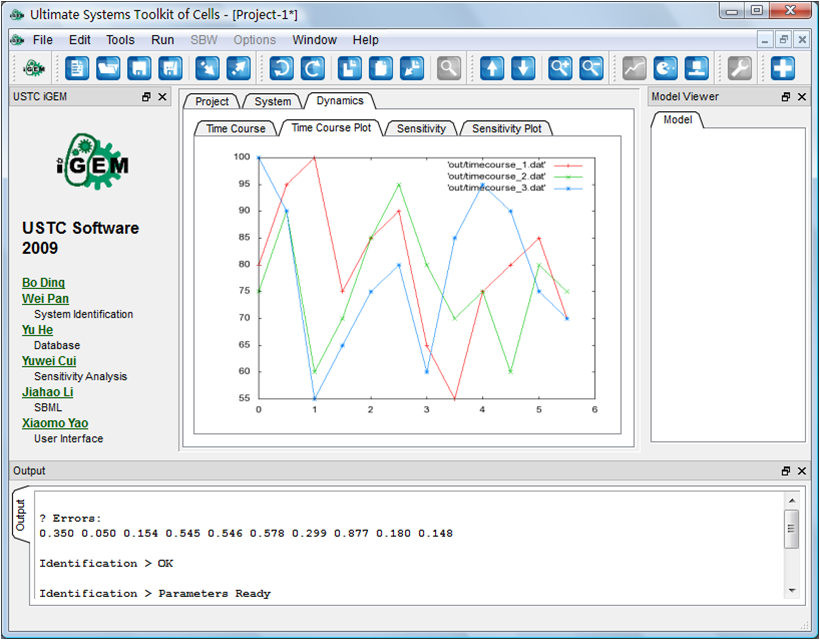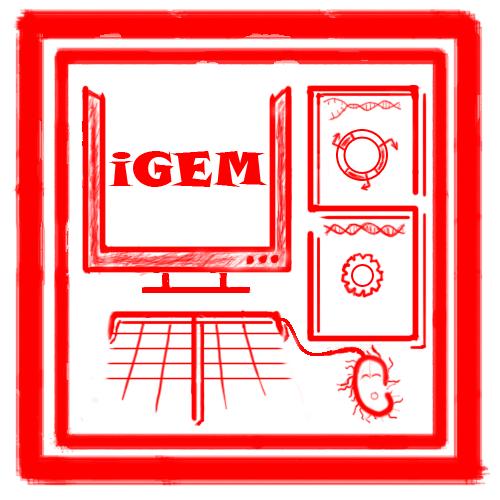Team:USTC Software/Notebook
From 2009.igem.org
(→I/O Database (Yu He)) |
|||
| Line 149: | Line 149: | ||
| | | | ||
===I/O Database (Yu He)=== | ===I/O Database (Yu He)=== | ||
| + | |||
| + | ====Apr. 3, 2009==== | ||
| + | Release of '''''bmptodat''''' plug-in | ||
| + | Source Code File:FuncExtractor.cpp | ||
| + | Function: Extract function info from a .bmp file | ||
| + | Input: .bmp file path and name (less than 200 bytes) | .dat file path and name (less than 200 bytes) | ||
| + | Output: .dat file with range x[0,1], y[0,1], and step length of 0.01 (alterable). | ||
| + | Demo: | ||
| + | 1.Draw the picture D:\Activities\iGEM\Codes\weigh.bmp like this: | ||
| + | |||
| + | [[Image:wigh.bmp|left|300px|thumb]]<br /> | ||
| + | 2.Input like this: | ||
| + | |||
| + | [[Image:console.jpg|left|300px|thumb]] <br /> | ||
| + | 3.Get a .dat file at under folder D:\Activities\iGEM\Codes, named weigh.dat like this: | ||
| + | |||
| + | [[Image:funcextractordat.jpg|left|300px|thumb]]<br /> | ||
| + | 4.Testify the output weigh.dat file by Origin8.0: | ||
| + | |||
| + | [[Image:testorigin.jpg|left|300px|thumb]]<br /> | ||
| + | To be improved: | ||
| + | 1.Rescale-able range of x-axis and y-axis<br /> | ||
| + | 2.User designated step length<br /> | ||
| + | 3.Function of ‘smoothing’<br /> | ||
| + | |||
| + | ====Apr. 15, 2009==== | ||
| + | Release of '''''matrixtoode''''' plug-in | ||
| + | Source Code File:Matrix_ODEArray_conv_1.0.cpp | ||
| + | Function:Convert a interaction-style matrix into text-ified ODE Array | ||
| + | Input: a coefficient matrix through console window | ||
| + | Output: .txt file describing the ODE Array in matlab readable text. | ||
| + | Demo: | ||
| + | 1.Input the coefficient matrix like this: | ||
| + | |||
| + | [[Image:MatrixtoODE.jpg|left|300px|thumb]] <br /> | ||
| + | 2.Output completed like this: | ||
| + | |||
| + | [[Image:console2.jpg|left|300px|thumb]] <br /> | ||
| + | Note: Depreciated later on. | ||
| + | |||
| + | |||
| + | ====May. 15, 2009==== | ||
| + | |||
| + | |||
| + | ====Oct. 8, 2009==== | ||
| + | Thanks to Grapeot's timely suggestion and help. The new version of '''''bmptodat''''' plug-in is successfully upgraded by taking color-depth into consideration. This eliminates the x-axis 'triple folding' bug due to differnt color-depth of 8 bits and 24 bits. | ||
| + | |||
| - | |||
|} | |} | ||
Revision as of 07:03, 21 October 2009
| About | Team and People | Project | Standard | Notebook | Demo | Safety | External Links |
|---|
|
|
Opening RemarkIt's time to move from paper to website. We might recall the ever first plan and ambition when we first set feet on the software designing track. The following documentations record word by word the way how we are here. Calendar and EventsWork Distribution
Future PlanOur detailed future plan about ABCD Suite is discussed in form of FAQ HERE. Closure - End or And?We hold in hands the same motivation to adventure, unfold and appreciate the secret of life via the way of virtual evolution and simulation. The seven of us major from automation to engineering, mathematics to physics, grading from freshman to PhD candidates. Though there had been hard times, we have a faith. More hopefully, we’d express our gratitude to the kind support from the School of Life Science of USTC, which makes all impossible possible. From the one-month brainstorm we collected our first proposal – construct virtual bacteria. Yet, for some practical reasons we then shifted to a second proposal, which narrowed to molecular level simulation and later on turned out to be the prototype of our present project. From the one-month brainstorm we collected our first proposal – construct virtual bacteria. Yet, for some practical reasons we then shifted to a second proposal, which narrowed to molecular level simulation and later on turned out to be the prototype of our present project. What do we desire to realize? In short, just tell us what you want your bio-device to behave, and we will return you with a list of eligible formation strategies for your design, of course, with bio-bricks. Turgidly as the idea might appear to be, this is basically an adoption of the gist of reverse engineering and evolution. By intake the custom-designated behaviors, we search, sometimes traverse, the solution space formed by nearly-inexhaustible combination of Biobricks. In order to make the simulative process applicable and practical, we employed a couple of algorithms widely used in computational sciences like Metropolis method and Dijkstra Algorithm to cut down the time cost and optimize the final result. Analysis on sensitivity and robustness has also been carried out to escort a reliable output of the final list of Biobrick combinations. Now we have an ABCD for reconstruction of bio-network, or rather, all ODE systems theoretically. But there still exist many more defects and more inspirations on a higher level. Therefore, instead of fixing 'The End' to the last line of our notebook, we'd rather define another 'and...' clause, claiming another start for greater good. See ya iGEM2010! |
|
 "
"






















